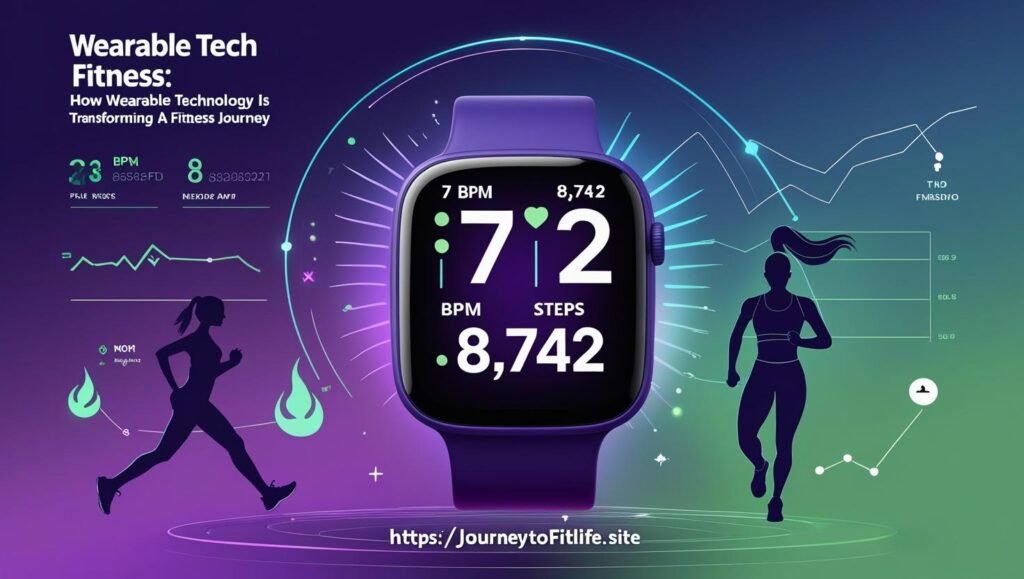
Decoding Your Data: How Wearable Technology is Transforming Your Fitness Journey
Unlock the power of your personal health metrics with smart devices that track, analyze, and motivate your path to better fitness.
Experience Wearable Technology
The fitness landscape has undergone a remarkable transformation in recent years, with wearable technology emerging as a game-changer for health enthusiasts and fitness beginners alike. These smart devices have revolutionized how we track, understand, and improve our physical well-being.
What is Wearable Fitness Technology?
Wearable fitness technology encompasses a range of devices designed to be worn on the body, continuously collecting data about your physical activities and bodily functions. From smartwatches and fitness bands to smart clothing and specialized sports equipment, these devices serve as personal health monitors that provide real-time feedback on various aspects of your fitness journey.
Key Metrics Tracked by Modern Wearables
The Benefits of Data-Driven Fitness
The integration of wearable technology into your fitness routine offers numerous advantages that can significantly enhance your journey toward better health. By leveraging the power of personal data, you can make more informed decisions about your exercise regimen, nutrition, and recovery strategies.
1. Personalized Insights and Goal Setting
Wearable devices collect data specific to your body and activities, providing personalized insights that generic fitness advice cannot match. This information allows you to set realistic goals based on your actual performance rather than arbitrary standards. For instance, instead of aiming for the commonly recommended 10,000 steps per day, your device might suggest a more appropriate target based on your baseline activity level and fitness objectives.
To determine your ideal fitness goals, you can use our BMI Calculator and Ideal Weight tool alongside your wearable data for a comprehensive understanding of your fitness needs.
2. Real-Time Feedback and Motivation
One of the most powerful features of wearable technology is its ability to provide immediate feedback on your performance. Whether you’re in the middle of a high-intensity interval training session or taking a casual walk, your device can alert you to your current heart rate, pace, and calorie burn, helping you adjust your intensity accordingly.
This real-time feedback serves as a powerful motivator, especially when combined with gamification elements like achievement badges, progress bars, and friendly competitions. For those struggling with motivation, check out our guide on Staying Motivated on Your Fitness Journey.
Tracking Your Progress: Weekly Activity
3. Comprehensive Health Monitoring
Modern wearables go beyond simple step counting to provide a holistic view of your health. Advanced metrics like VO2 max (a measure of cardiorespiratory fitness), heart rate variability (HRV), and blood oxygen saturation offer deeper insights into your overall well-being. Understanding these metrics can help you optimize your training and recovery strategies.
To better understand your cardiovascular fitness, our VO2 Max Calculator and Target Heart Rate Calculator can complement the data from your wearable device.
Integrating Wearable Data with Your Fitness Plan
The true power of wearable technology lies not just in data collection but in how you apply these insights to optimize your fitness routine. Here’s how to make the most of your wearable data:
Optimizing Workout Intensity
Heart rate monitoring allows you to train in specific zones to achieve different fitness goals. For fat burning, maintaining your heart rate at 60-70% of your maximum is often recommended, while cardiovascular improvements typically require working at 70-85% of your maximum heart rate. Your wearable can alert you when you’re in the optimal zone for your specific goal.
For those interested in high-intensity training, our article on HIIT: Why High-Intensity Interval Training Remains a Top Fitness Trend provides valuable insights on how to incorporate heart rate data into your interval workouts.
Nutrition and Calorie Management
Wearables that track your calorie expenditure can be invaluable for weight management. By comparing calories burned (as measured by your device) with calories consumed, you can maintain the appropriate energy balance for your goals, whether that’s weight loss, maintenance, or muscle gain.
To calculate your optimal calorie intake based on your activity level, use our Calorie Calculator and BMR/TDEE Calculator. For those looking to create a sustainable calorie deficit, our guide on How to Create a Calorie Deficit Without Feeling Hungry offers practical strategies.
Recovery and Sleep Optimization
Perhaps one of the most underrated aspects of fitness is proper recovery, and this is where wearable technology truly shines. Advanced sleep tracking features can analyze your sleep stages, breathing patterns, and movements to assess the quality of your rest. This data can help you identify factors affecting your sleep and make necessary adjustments to your bedtime routine.
For more information on the crucial relationship between sleep and fitness, read our article on Why Sleep is Essential for Weight Loss & Muscle Recovery.
Choosing the Right Wearable for Your Fitness Goals
With countless options available in the market, selecting the right wearable device can be overwhelming. Here are some factors to consider based on your specific fitness objectives:
For Weight Loss and General Fitness
Look for devices with accurate calorie tracking, step counting, and activity recognition. Features like inactivity alerts can help combat sedentary behavior, while goal-setting capabilities provide motivation. These devices work well alongside our Weight Loss Calculator and Macro Calculator to create a comprehensive weight management plan.
For Serious Athletes
Advanced metrics like running power, ground contact time, stride length, and recovery recommendations are valuable for performance optimization. GPS accuracy, longer battery life, and sport-specific features should be priorities. Athletes can use our One Rep Max Calculator and Running Pace Calculator to complement their training data.
For Health Monitoring
If your primary concern is health rather than fitness performance, consider devices with features like ECG monitoring, blood oxygen measurement, stress tracking, and detailed sleep analysis. These insights can be particularly valuable when used alongside our Body Fat Percentage Calculator and Waist-to-Hip Ratio Calculator for a comprehensive health assessment.
Making Sense of Your Wearable Data
While wearable devices provide valuable insights, understanding how to interpret and apply this data is crucial. Here are some key points to remember:
- Context matters: A single day’s data doesn’t tell the whole story. Look for trends over weeks and months.
- Individual variations: Your “normal” may differ from general guidelines. Establish your personal baselines.
- Technology has limitations: No consumer device is 100% accurate. Use the data as guidance, not absolute truth.
- Combine with other metrics: For a complete picture, integrate wearable data with other health assessments.
The Future of Wearable Fitness Technology
The evolution of wearable technology shows no signs of slowing down. Here’s what we can expect in the coming years:
Advanced Biometric Monitoring
Future wearables may include non-invasive glucose monitoring, hydration status assessment, and more comprehensive hormone tracking. These advancements will provide even deeper insights into how your body responds to different foods, exercises, and recovery strategies. Until then, you can use our Hydration Calculator to estimate your fluid needs based on your activity level.
AI-Powered Coaching
Artificial intelligence will increasingly analyze your data to provide personalized recommendations that adapt to your progress. Rather than simply tracking metrics, future wearables will offer actionable advice on workout modifications, nutrition timing, and recovery strategies tailored specifically to your body’s responses and goals.
For a glimpse into how technology is reshaping fitness, check out our article on The Technological Revolution in Fitness: Workouts of the Future.
Integration with Healthcare Systems
The line between consumer fitness wearables and medical devices continues to blur. In the future, your wearable data may be seamlessly shared with healthcare providers, allowing for more proactive and personalized medical care. This integration could revolutionize preventive healthcare by identifying potential issues before they become serious problems.
Conclusion: Your Data-Driven Fitness Journey
Wearable technology has transformed fitness from a guessing game into a data-driven science. By leveraging the insights provided by these devices, you can optimize your workouts, nutrition, and recovery for maximum results with minimum wasted effort. Whether you’re just beginning your fitness journey or looking to break through a performance plateau, wearable technology offers valuable tools to help you achieve your goals.
Remember that while data is powerful, it’s ultimately a means to an end—the improvement of your health and well-being. Use your wearable as a guide, but don’t let the pursuit of perfect metrics overshadow the joy of movement and the satisfaction of progress.
Ready to take your fitness journey to the next level? Start by exploring our comprehensive collection of fitness calculators to complement your wearable data, and check out our Ultimate Guide to Home Workouts for practical ways to put your newfound insights into action.
Share Your Experience
Do you use wearable fitness technology? We’d love to hear about your experience! Share in the comments below how these devices have impacted your fitness journey and any tips you have for making the most of your wearable data.
